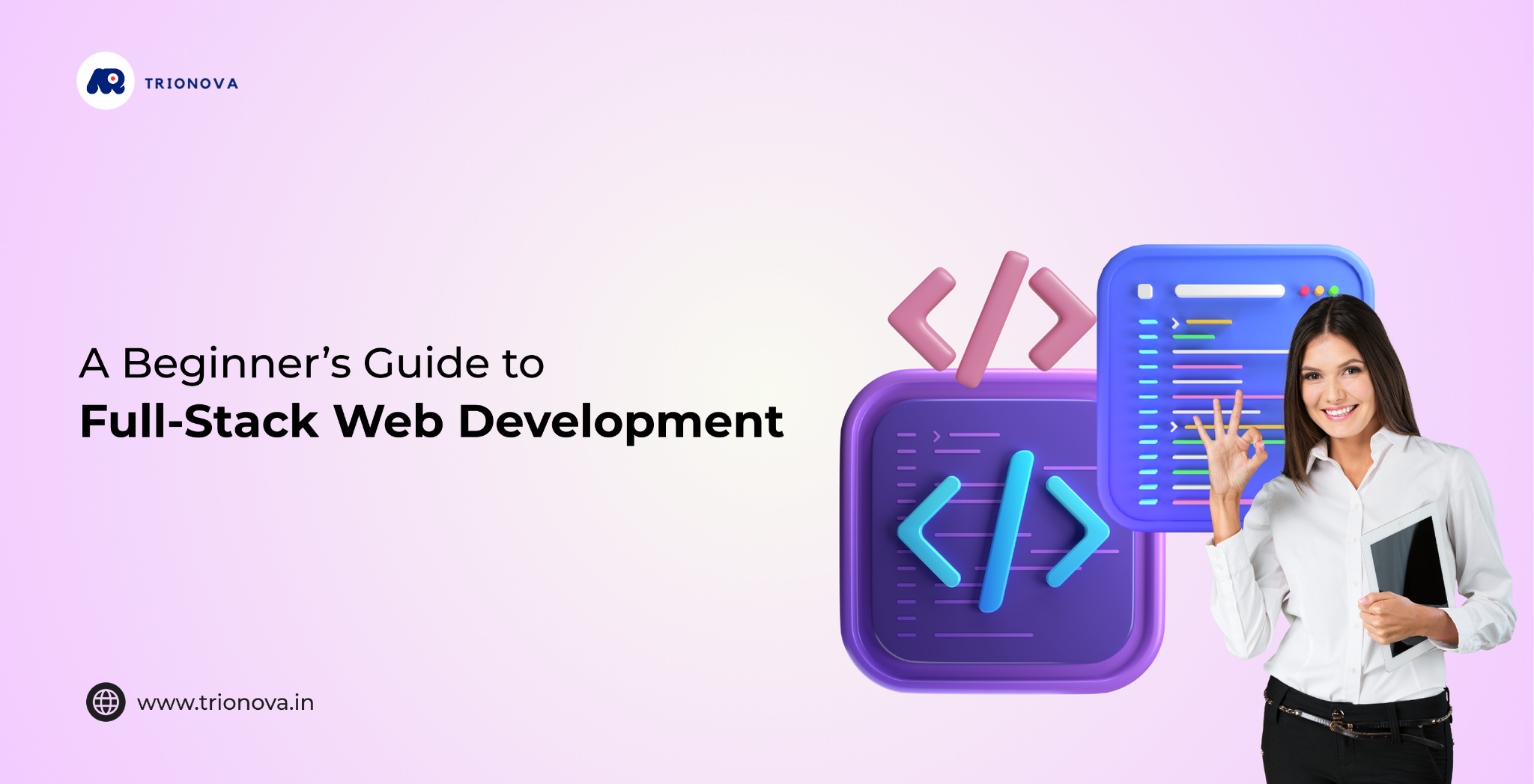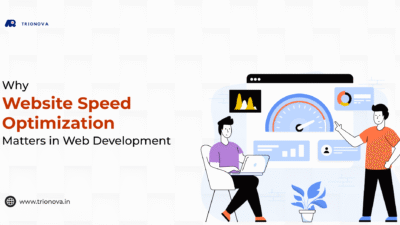In 2025, the digital world is moving faster than ever. Every business, whether a startup or an enterprise, needs a website that is fast, scalable, secure, and user-friendly. A website is no longer just an online presence — it is your digital storefront. The right web development framework plays a key role in determining how well your website performs, how quickly it loads, and how easily it adapts to future needs.
At Trionova Technology, a leading website development company in Chennai, we help businesses select the right frameworks to build websites that not only look stunning but also drive measurable results. In this article, we’ll explore the best web development frameworks in 2025, their strengths, cost considerations, and how to decide which one is right for your business.
What is a Web Development Framework?
A web development framework is a collection of pre-written code, tools, and guidelines that developers use to build websites or applications efficiently. Instead of writing everything from scratch, frameworks provide a structure that makes development faster, more secure, and easier to maintain.
Frameworks are generally divided into two categories:
- Front-End Frameworks: These handle the user interface (UI) and everything that users see and interact with.
- Back-End Frameworks: These manage the server-side logic, database interactions, authentication, and overall performance.
Choosing the right framework ensures your website is not just beautiful, but also robust, scalable, and future-ready.
Top Front-End Frameworks for 2025
1. React.js
- Why it’s popular: Developed by Facebook (Meta), React.js is the most widely used front-end framework in 2025. It offers component-based architecture, virtual DOM for fast performance, and an extensive ecosystem.
- Best for: E-commerce websites, SaaS dashboards, and apps requiring interactive UI.
- Cost factor: Hiring a React.js developer costs between ₹60,000–1,20,000 per month (CAD $1,000–2,000) in India, but nearly triple in the US/Canada.
2. Angular
- Why it’s popular: Maintained by Google, Angular provides two-way data binding, built-in testing tools, and strong security features.
- Best for: Enterprise-grade apps, banking platforms, and healthcare solutions.
- Cost factor: Slightly higher learning curve means development can be 10–15% more expensive compared to React.
3. Vue.js
- Why it’s popular: Lightweight, easy to learn, and highly flexible. Vue is gaining momentum in 2025 as a perfect balance between React and Angular.
- Best for: Startups, small businesses, and progressive web apps (PWAs).
- Cost factor: Development cost is often 20–30% lower than Angular because of faster setup.
4. Svelte
- Why it’s popular: Svelte compiles code into small, efficient JavaScript, making websites extremely fast.
- Best for: High-performance websites where speed is critical (news portals, content-heavy platforms).
- Cost factor: Newer talent pool means slightly higher costs, but the payoff is long-term performance gains.
Top Back-End Frameworks for 2025
1. Node.js
- Why it’s popular: Enables full-stack JavaScript development, meaning developers can use the same language for front and back end. It’s extremely fast and scalable.
- Best for: Real-time apps, chat applications, fintech, and streaming platforms.
- Cost factor: Affordable in India with costs between ₹8–15 lakhs ($15k–25k CAD) for mid-level projects.
2. Django (Python)
- Why it’s popular: Django is known for its security, scalability, and “batteries-included” approach. It’s widely used by enterprises and startups alike.
- Best for: E-commerce platforms, healthcare apps, AI/ML integrations.
- Cost factor: Developers may be slightly pricier than PHP-based frameworks, but maintenance costs are low.
3. Laravel (PHP)
- Why it’s popular: Laravel remains one of the most beginner-friendly frameworks, offering quick development and excellent support.
- Best for: CMS, small-to-medium websites, and businesses looking for affordable solutions.
- Cost factor: Cheapest to develop and maintain — ideal for small businesses.
4. Ruby on Rails
- Why it’s popular: Rails still thrives in 2025 due to its strong conventions and rapid prototyping abilities.
- Best for: Startups who want to launch MVPs quickly.
- Cost factor: Higher developer costs compared to Laravel or Node.js.
5. Spring Boot (Java)
- Why it’s popular: Enterprise-grade solution backed by Java, offering excellent scalability and security.
- Best for: Banking, insurance, and mission-critical enterprise applications.
- Cost factor: Development costs are higher, but reliability makes it a top choice for enterprises.
Cost Comparison: Choosing the Right Framework
When it comes to cost, your choice of framework plays a significant role.
| Framework | Development Cost (India) | Development Cost (Canada/US) | Best For |
| React.js | ₹8–15 lakhs ($15k–25k CAD) | $40k–70k CAD | Scalable, interactive apps |
| Angular | ₹10–18 lakhs ($18k–30k CAD) | $50k–80k CAD | Large enterprise apps |
| Vue.js | ₹6–12 lakhs ($12k–20k CAD) | $35k–60k CAD | Startups, lightweight apps |
| Node.js | ₹8–15 lakhs ($15k–25k CAD) | $40k–70k CAD | Real-time applications |
| Django | ₹9–16 lakhs ($17k–27k CAD) | $45k–75k CAD | Secure, scalable apps |
| Laravel | ₹5–10 lakhs ($10k–18k CAD) | $25k–50k CAD | Small-to-mid websites |
| Spring Boot | ₹12–20 lakhs ($20k–35k CAD) | $60k–100k CAD | Enterprise-grade apps |
👉 By working with Trionova Technology in Chennai, businesses can save 40–60% in development costs compared to hiring in North America, while still ensuring world-class quality.
How to Choose the Right Framework for Your Business
- Business Goals – If you need a fast MVP, choose lightweight frameworks like Vue or Laravel. For enterprise security, go with Django or Spring Boot.
- Scalability Needs – If you expect millions of users, Node.js or Angular is a better fit.
- Budget – Laravel and Vue are budget-friendly, while Angular and Spring Boot are costlier but enterprise-ready.
- Talent Availability – Frameworks like React and Node.js have a large developer community, ensuring long-term support.
- Time to Market – Ruby on Rails and Vue help launch quickly, while Angular or Spring Boot may take longer but offer greater stability.
At Trionova Technology, we conduct a framework selection workshop for every client, ensuring the chosen stack aligns with both short-term goals and long-term scalability.
Why Trionova Technology is Your Best Partner
As the No.1 Website Development Company in Chennai, Trionova combines technical expertise, certified developers, and global experience to deliver websites that drive results. Here’s why businesses in India, Canada, and beyond trust us:
- Certified in All Major Frameworks: React, Angular, Node.js, Django, Laravel, Spring Boot — we have in-house expertise across the spectrum.
- Cost Advantage: Our pricing in Chennai is 50–60% lower than Canadian/US firms, without compromising on quality.
- End-to-End Services: From consulting and UI/UX design to development, deployment, and maintenance.
- Domain Expertise: We’ve built solutions for healthcare, eCommerce, travel, fintech, education, and more.
- Scalable & Future-Ready Solutions: We don’t just build websites — we engineer platforms that grow with your business.
Final Thoughts
The choice of framework in 2025 will define how your website performs in terms of speed, scalability, and cost-efficiency. While React.js, Angular, Vue, and Node.js dominate the market, backend frameworks like Django and Laravel remain top contenders. The right choice depends on your budget, scalability goals, and user experience needs.
At Trionova Technology, we guide businesses through this decision-making process, ensuring the framework you choose delivers maximum ROI. Whether you’re a startup in Chennai or an enterprise in Canada, our certified experts help you build future-ready websites at the right cost.
Ready to choose the right framework for your website? Partner with Trionova Technology — where innovation meets affordability.





